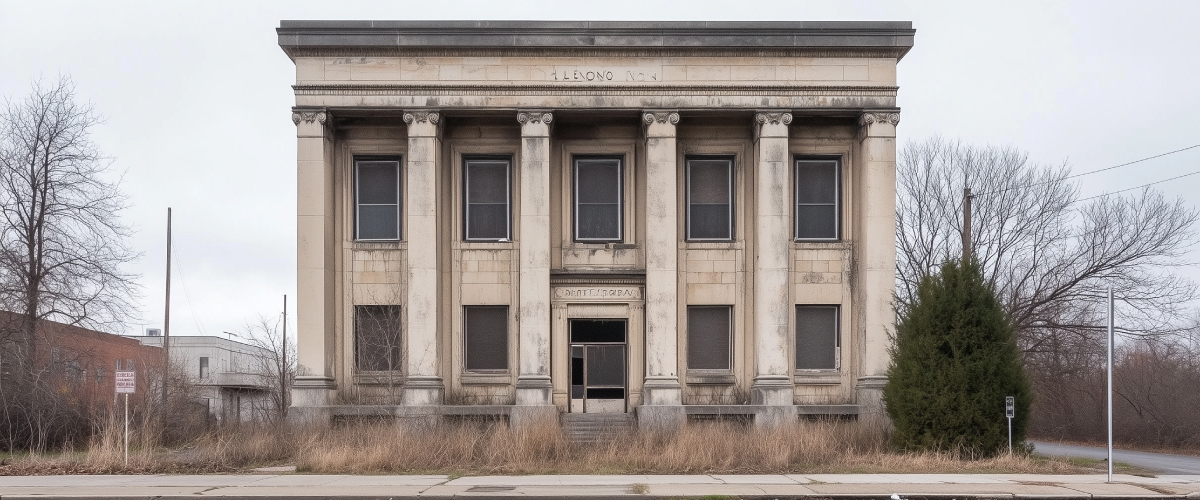The Banking Crisis 2023 Has Started
In early March 2023, all hell has broken loose in the financial markets.
Silvergate Capital Shuts Down
On March 8, Silvergate Capital, a major lender to the cryptocurrency industry, announced that it would shut down. Silvergate had only around $11 billion in assets, so it was a relatively small bank. Failed cryptocurrency exchange FTX was one of Silvergate’s largest customers.
Silicon Valley Bank Collapses
Two days later, on March 10, the FDIC and the Federal Reserve closed Silicon Valley Bank, the 16th largest bank in the country with assets of around $200 billion. The bank was popular with start-up companies in Silicon Valley. As the companies grew, they tended to keep their money in the bank. For instance, the online game company Roblox apparently had $150 million deposited in the bank.
The collapse was the second largest in US history, next to Washington Mutual, which failed in 2008 at the height of the 2007-2009 global financial crisis.
Signature Bank Fails
Two days later, on March 12, Signature Bank, a New York bank that had a large real estate lending business and, like Silvergate, had focused on cryptocurrency deposits, shut down. Signature had $110 billion in assets and represented the third largest bank failure in US history.
Impact on Regional Banks
On March 13, the share prices of several major US regional banks were hit hard. They included institutions that are dominant regionally but not nationally, such as First Republic, Comerica, PacWest, Western Alliance, and Zions Bank.
On March 16, a consortium of banks pledged $30 billion to bail out First Republic, the regional bank widely viewed as most vulnerable to collapse. It wasn’t enough. Its shares fell an additional 30% on March 17. First Republic’s share price has now fallen more than 90% from its all-time high in 2021.
Causes of the Banking Crisis 2023
What happened? In our view, this financial crisis is a continuation of a cascading series of failures aided and abetted by massive accounting and credit rating fraud and complicated by the long-term policy of the Federal Reserve to keep interest rates near zero from 2008 until early 2022.
Federal Response and Inflation Concerns
And now, Uncle Sam is trying to clean up the mess. We will see how successful they will be in the coming weeks. It seems clear, though, that the government’s efforts to contain it will have far-reaching effects.
Our biggest concern is inflation, perhaps even hyperinflation, in the months and years ahead.
Here’s why. When Silicon Valley Bank collapsed, the Fed and the FDIC stepped in hard to ensure the damage didn’t spread. They didn’t just back all the deposits in Silicon Valley Bank that were FDIC insured with a limit of $250,000 per account. They announced that all the deposits were safe. That policy implied that they would do the same for every bank that might fall into trouble anywhere in the country.
Uninsured Deposits and the Fed’s Balance Sheet
There are about $7 trillion in uninsured deposits in US banks. In effect, the Fed has taken this $7 trillion and added it to its already bloated balance sheet and paid for these assets with money created out of thin air.
President Biden says this isn’t a “bailout” and that taxpayers won’t have to pay anything as a result of these actions. And that may be true in terms of their tax burden. But now every deposit at every bank is at risk due to inflation. The purchasing power of every dollar you have deposited in a bank or held in the form of cash is set to collapse.
Indeed, we’re already seeing the inflationary impact of these policies in the financial markets. Stock prices have rebounded and erased the losses they experienced in the last two weeks. Interest rates for 30-year mortgages have fallen below 7% for the first time in months. This will make homes more affordable and thus encourage sellers to raise prices. These inflationary effects will then cascade through the economy.
Upcoming Fed Decisions
In addition, on March 22, the Fed will meet to decide on how much more to increase short-term interest rates. Before the latest banking crisis began, the Fed was expected to increase rates by 0.5% as it battles inflation. Analysts now anticipate only a 0.25% increase or perhaps none at all.
In effect, the Fed is throwing in the towel on inflation. The worst effects of this inflation won’t be felt right away. But over time, we’ll all experience it.
Consequences of Inflation
Inflation isn’t just unpleasant; it can literally break a civilization. This is because it makes it impossible for a person who relies on their labor to generate income to keep up with rising prices. Wages can never keep up with inflation. The rich get richer because they own productive assets whose value rises with inflation. Those who aren’t rich get screwed.
Inflation also leads to policies that ensure further inflation. For instance, as inflation ravages wage-earners’ purchasing power, political pressure builds for initiatives such as a “universal basic income” or a “living wage” – policies that themselves lead to higher inflation.
Protecting Yourself During the Banking Crisis 2023
What can you do to protect yourself from this financial crisis and the coming inflationary storm?
-
First, get your money out of banks, especially deposits of $250,000 or more. There’s no guarantee the Fed will continue to backstop deposits above this level, although it wants you to think that it will. And if the crisis gets bad enough, we could even see Cyprus-style bail-ins.
-
Second, do what wealthy people do. Buy productive assets that keep up with inflation. Or passive assets such as gold that are traditional inflation hedges.
Recommended Reading
But accumulating productive assets and gold won’t be enough. As inflation splinters societies, it’s also important to build personal resiliency. For instance, if you have extra storage space in your home, we endorse the strategy of stockpiling real goods. Stockpiling is also a powerful inflation hedge, making this strategy more relevant than ever as prices surge.
Finally, as civilization breaks down, you’ll want to look at ways of “getting out of Dodge,” if necessary. The ultimate tool for doing so is a second passport and citizenship, or at least legal residence in another country.
Need Help?
Schedule a free no-obligation consultation with a Nestmann Associate to see if our four decades of wealth preservation experience can help you protect against bail-ins and help you build a wealth protection plan that fits your needs.



